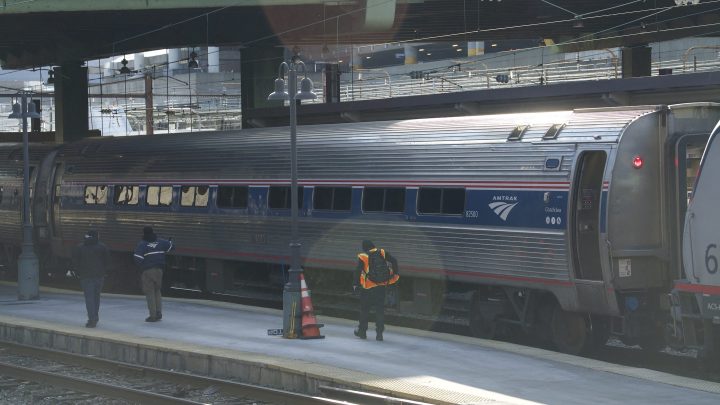
High-speed rail — environmentally friendly and popular worldwide — has a hard time in the U.S.
High-speed rail — environmentally friendly and popular worldwide — has a hard time in the U.S.

President Joe Biden went to Las Vegas on Friday to announce more than $8 billion in funding for passenger rail projects — including a high-speed line to Sin City and another in California — whose construction has been dragging on for years.
Countries around the world have embraced high-speed rail as a climate-saving alternative to flying. There are thousands of miles of lines crisscrossing Europe and Asia. Here in the U.S., though — at least, outside the rail-friendly Northeast corridor — not so much.
But it has its proponents. Rick Harnish sounds almost reverent when he talks about high-speed rail. Which makes sense because he leads the High Speed Rail Alliance, an advocacy group.
“Today, in China, you can go the distance of Chicago to New York in 4½ hours,” he said.
It’s over 700 miles between Chicago and New York, as the crow flies. But if you take Amtrak between those cities, the journey will take five times as long.
One reason trains can’t zip along the existing routes is in most of the country, Amtrak doesn’t own the actual track.
“It’s mostly owned by the freight rail companies, who have their own businesses to run and their own freight to deliver,” said Robert Puentes, CEO of the Eno Center for Transportation.
This means passenger trains are required to share their tracks with freight trains, which Amtrak says causes delays.
To have effective high-speed passenger rail, Puentes said, we need to build dedicated track for it. And that’s not something we’re used to doing.
“We don’t necessarily have the workforce, we don’t have the project managers, we don’t have the political apparatus. So all that kind of has to be done from scratch,” he said.
It’s also incredibly expensive. Take the line that aims to connect Los Angeles and San Francisco. Yonah Freemark with the Urban Institute noted that it received more than $3 billion this week from the federal government.
“Which may sound like a lot of money, but the project as a whole to connect Los Angeles and San Francisco is going to cost more than $100 billion to build,” he said. “So this is just a drop in the bucket when it comes to overall project costs.”
Freemark said it’s not clear where all that money’s going to come from.
Another challenge, he noted, is that getting these rail lines from planning to completion requires political will that persists for decades.
“To ensure that projects that we’re planning now actually get built, you need to have political consensus in favor of these investments over time,” he said.
Essentially, it’s not enough to have presidents and governors back high-speed trains today. The projects depend on the commitment of many administrations into the future.
There’s a lot happening in the world. Through it all, Marketplace is here for you.
You rely on Marketplace to break down the world’s events and tell you how it affects you in a fact-based, approachable way. We rely on your financial support to keep making that possible.
Your donation today powers the independent journalism that you rely on. For just $5/month, you can help sustain Marketplace so we can keep reporting on the things that matter to you.

















